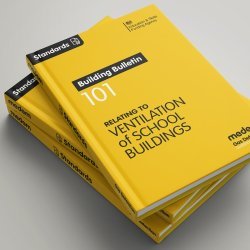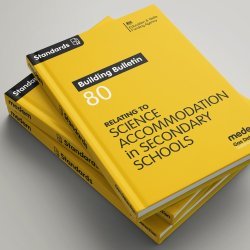Building Bulletin 101, ventilation of school buildings
Building Bulletin 101 is a 2nd tier regulatory document to the Building Regulations part F. This covers the ventilation in education buildings.
The fresh air background Carbon Dioxide (CO2) level is typically between 350-450 ppm. Within a building, without adequate ventilation, this level will rise considerably where there are people. The levels will tend to be higher in education buildings because the occupancy is higher for a given reservoir of air in a classroom. The average adult (or older student) exhales an amount of carbon dioxide at a level around 35,000-50,000 ppm. This equates to about 0.01 grams per second (g/s) (about 0.005 l/s).
DfES Building Bulletin 101 – Ventilation of School Buildings
This supports the Building Regulations Part F in laying out the requirements for ventilation in schools particularly states that:
“ventilation should be provided to limit the concentration of carbon dioxide in all teaching and learning spaces so that when it is measured at seated head height, during the continuous period between the start and finish of teaching on any day, the average concentration of CO2 should not exceed 1500 ppm.”
This is a limiting value and it requires that at any occupied time, including when teaching, the occupants should have the ability to lower the CO2 concentration to 1000 ppm (by extra ventilation). CIBSE TM30 also recommends a limiting value of approximately 1000 ppm.
Bunsen burner use will also increase the CO2 levels since a Bunsen burner will produce about double the amount of CO2 produced by a student or teacher.
It should be noted that IGEM document UP11, Edition 2, “Gas for use in education establishments” allows for higher levels of CO2 to be present in some teaching areas but that the BB101 is clear that the CO2 level over the teaching day does not average more than 1,500 ppm.
If you require any additional information on our systems to help meet these design standards or wish to discuss the standards further please don’t hesitate to contact us.
- CATEGORY Building Bulletin , Education , Gas Detection
- TAGS






